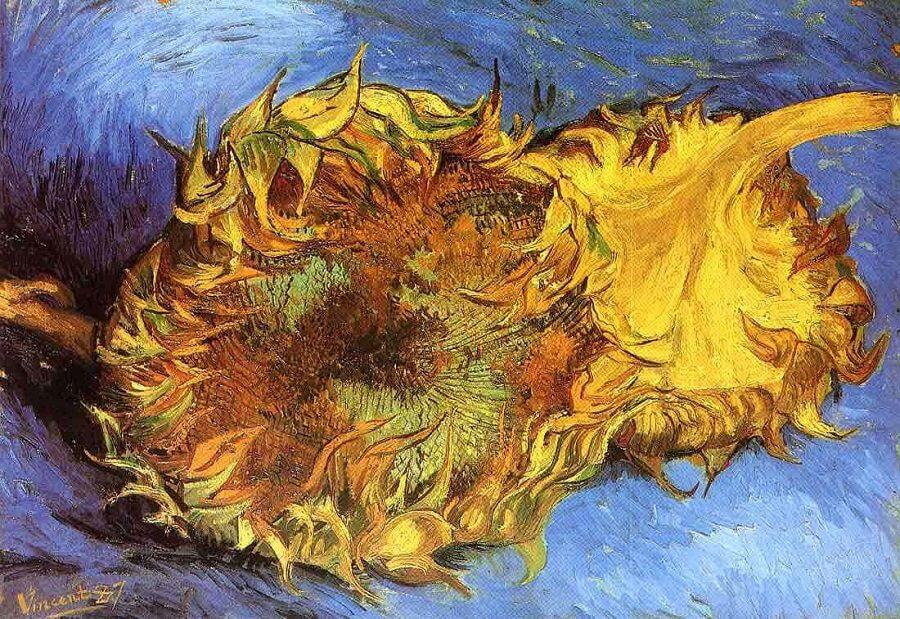Two Cut Sunflowers, 1887 by Vincent Van Gogh

Van Gogh's continuing admiration for Japanese art became increasingly evident in his paintings, and in turn he admired the Impressionists for their absorption of Oriental influences. Drawing on his early experiences with the firm of art dealers Goupil et Cie, in March 1887 Van Gogh organized an exhibition of Japanese prints at the Cafe du Tambourin, and later turned to Japanese motifs for several of his paintings. By now his palette had become stridently colored and almost unrecognizable from the somber tones of his 'Dutch' period.
In the summer of 1887 he began to paint vibrant sunflowers having first seen them blooming with brilliant yellow in the gardens around Montmartre. It was a motif that he would return to often and one that he is now perhaps most associated with. Almost a year after painting Two Cut Sunflowers Van Gogh wrote from Arles in the south of France to his friend Bernard, 'I am thinking of decorating my studio with half a dozen pictures of 'Sunflowers', a decoration in which the raw or broken chrome yellows will blaze forth on various backgrounds...'

Van Gogh did not specify which of Monet's landscapes he had admired, but among those shown in Petit's exhibition were two of the latter artist's Tulip Fields, which would undoubtedly have attracted Van Gogh's attention. However, comparison of these works with Van Gogh's landscapes of 1886 highlights the contrasts between the two. Monet's intense colour and elaborately wrought, heavily impasted paint surfaces are utterly unlike the muted tonality and simple, direct execution of Van Gogh's canvases.




















